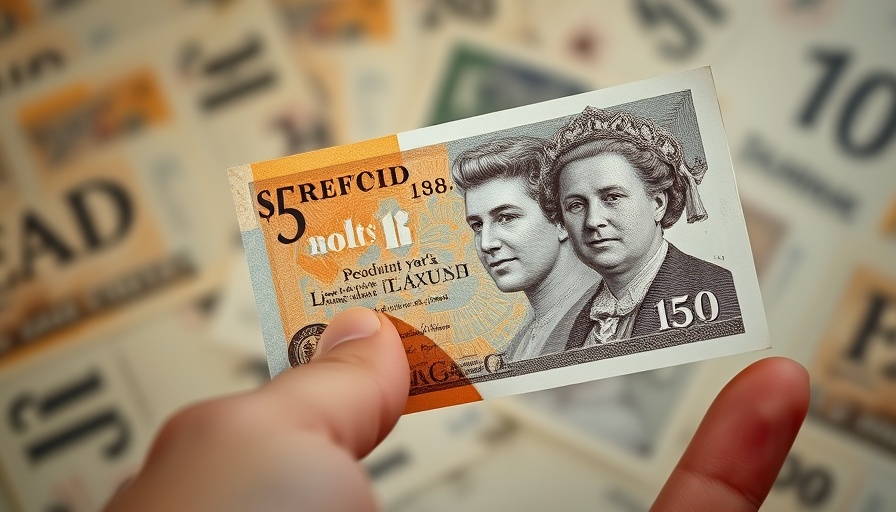
The Rise of Counterfeit Currency: What You Need to Know
As we navigate a world rife with financial uncertainty, it's important to understand the implications of dealing with currency—both real and fake. In the recent video titled “Fake £20 Banknote Bank of England Polymer Series”, the discussion tackles a critical issue that many may overlook: the prevalence of counterfeit notes that can pose significant risks to everyday transactions. As young families and aspiring homeowners, understanding these nuances can empower you in making informed financial decisions.
In the video 'Fake £20 banknote note Bank of England polymer series,' the issue of counterfeit currency is explored, prompting an important discussion about financial literacy and protection.
Why Counterfeit Currency Should Matter to You
For first-time buyers and families just beginning their journeys in homeownership, inflation and rising property prices create enough financial strain without the added worry of fakes in circulation. Counterfeit currency not only highlights a need for vigilance in cash transactions but also serves as a reminder about the importance of managing your finances carefully. With the UK polymer £20 note having been designed with advanced security features, the emergence of sophisticated counterfeit currency underscores the necessity of being educated consumers.
The Hidden Costs of Fake Currency and Financial Security
Dealing with counterfeit money can lead to financial losses that extend far beyond just a few pounds. If you unknowingly accept a fake note, you might not only lose your goods or services but also face legal implications. For young families, budgeting for a home and navigating mortgages, understanding how to identify counterfeit currency can be crucial for establishing a solid financial foundation while avoiding unnecessary setbacks.
Tips for Spotting Counterfeit Currency
The video suggests a few methods to identify whether your banknotes are genuine, including:
- Feel: Genuine notes have a distinct texture from fake ones due to the polymer material.
- Look: Examine the holographic image and the transparent window embedded in the note.
- Check: Use a UV light; real banknotes have features that glow under specific wavelengths.
Being proactive in recognizing these features not only protects you financially but also builds confidence as you navigate everyday transactions. In an age where online banking and digital currencies dominate, physical cash isn't as common, but knowing how to distinguish the real from the fake can significantly boost your financial awareness.
A Deeper Look into Financial Literacy
The proliferation of counterfeit currencies underscores the need for financial literacy, particularly among young families who are still learning how to budget effectively. Having a fundamental understanding of currency issues, combined with savvy budgeting skills, can provide you a better grasp of your financial landscape. Resources such as local workshops, online courses, and community classes can be beneficial in enhancing your financial knowledge.
Why This Knowledge Can Protect Your Future
The ramifications of fake currency can ripple out to affect broader financial stability—yours and that of the community around you. Educating yourself about currency authenticity can enable you to contribute to a healthier local economy. As advocates for financial transparency and integrity, we, as consumers, have the power to make a significant impact by staying informed and diligent in our purchases.
In conclusion, as aspiring homeowners navigating the complexities of mortgages and rising costs, ensuring that you are financially savvy goes beyond just budgeting for your future. Understanding counterfeit currency, highlighted in the video “Fake £20 Banknote Bank of England Polymer Series,” can be an essential part of your financial education and preparedness. It’s all about being proactive rather than reactive. Take the time to educate yourself and arm yourself with knowledge that can ultimately lead to financial empowerment.
 Add Row
Add Row  Add
Add 




Write A Comment